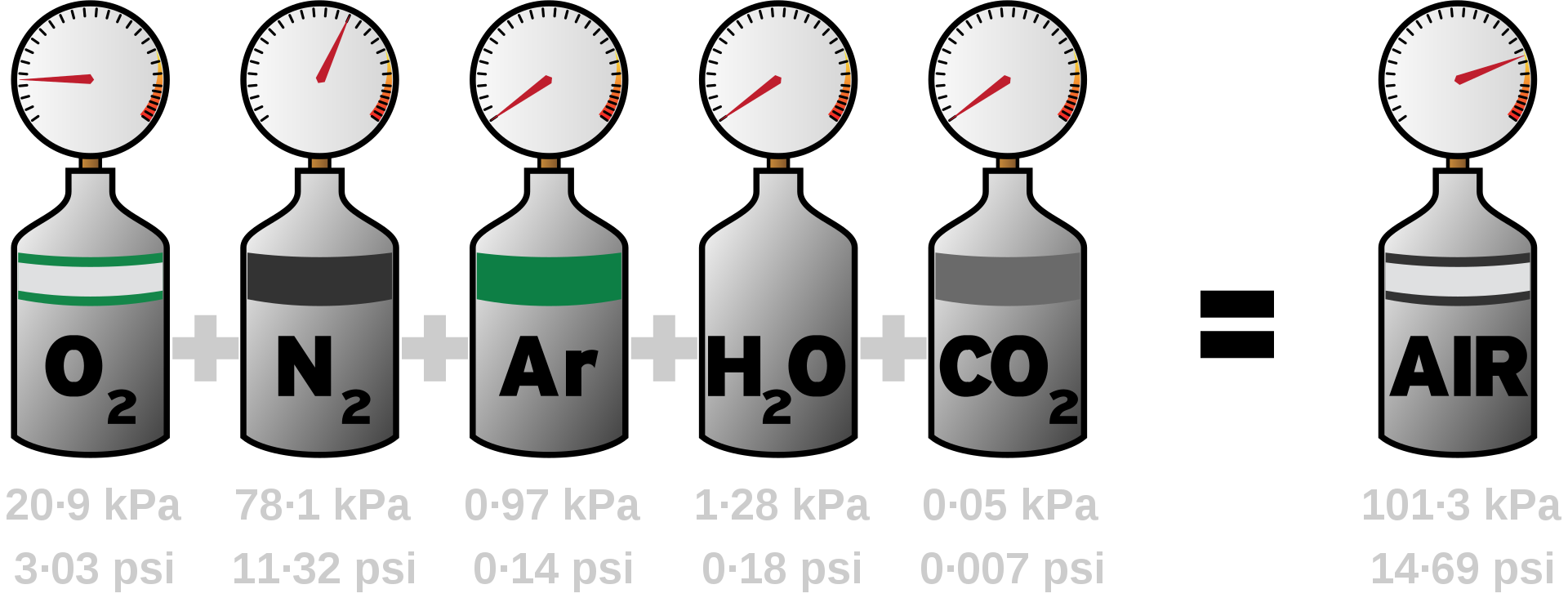Dalton’s Law Formula
Dalton’s Law
Dalton’s Law Formula explains the behavior of gases and more precisely, for mixtures of gases. English chemist John Dalton first published it in the year 1802. Besides, the law state that when there is a blend of inactive gases (there is no reaction between them), the total pressure that it applies is equal to the amount of the partial pressure of each gas. We know this law by another name that is Dalton’s law of partial pressures.

In other words, it is a mixture of non-reacting gases, the total pressure exercised is equal to the sum of the partial pressures of the individual gases. Also, this law is related to the ideal gas law.
Dalton’s Law Formula
For a mixture of n number of gases the total pressure is:
Or we can simply write it as:
In this equation or formula,
In this the term
In this way, the number of moles in a mixture of gases is equal to the sum of the moles of each gas.
Uses of Dalton’s law
We can use it to calculate the mixtures of gases and the pressure and volume of each gas and are very important for the chemical industries. Nowadays, industries use sophisticated software for calculating these parameters. Still, Dalton’s and Avogadro’s law are the base of all these technologies.
Dalton’s law explanation by an example
Suppose in a mixture of nitrogen gas, helium gas, and argon gas, we have to measure the pressure and it was assessed in 2 atm. Furthermore, the technician confirmed that the pressure of nitrogen in the mixture is 0.8 atm and the pressure of helium is 0.5 atm. So what is the pressure of argon gas in the mixture?
Solution: For calculating the pressure we have to use Dalton’s law formula which is:
Now we put the value in it and rearrange the formula. So we get
Consideration
At the same time we use Avogadro’s law, presently for the industrial purposes, there are optimizations that should be made in this ideal gas consideration. Besides, the appearance for the ideal gas does not reflect factor that equations as the Vander Waals equation for real gases specified to add in order to clarify better the real behavior of some gases.
Solved Example for You
Question: Suppose there are three gases argon, nitrogen, and hydrogen which are mixed in a container of 500 mL. in addition, the pressure of nitrogen is 228 torr, hydrogen is 752 torr, and argon is 255 torr. Now, calculate the total pressure in the container.
Solution: We know that the total pressure is the sum of partial pressure of each gas. Hence, adding the total pressure we get